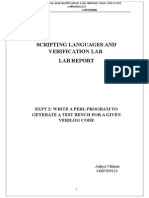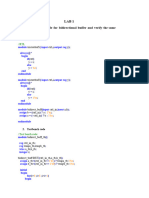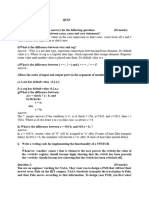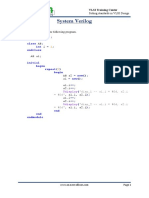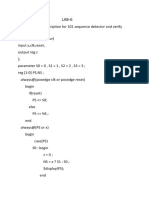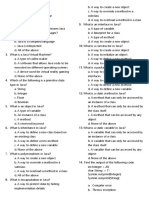0% found this document useful (0 votes)
251 views38 pages8 - Test Bench System Verilog
The document describes a test bench for verifying Verilog designs. It discusses the purpose of a test bench, which is to generate stimulus, apply it to the module under test, and compare outputs to expected values. It provides examples of writing test benches using initial and always blocks to generate waveforms. It also describes various system tasks like $display, $monitor, and $dumpfile that can be used for simulation output and creating value change dump files.
Uploaded by
Nirali PatelCopyright
© © All Rights Reserved
We take content rights seriously. If you suspect this is your content, claim it here.
Available Formats
Download as PPSX, PDF, TXT or read online on Scribd
0% found this document useful (0 votes)
251 views38 pages8 - Test Bench System Verilog
The document describes a test bench for verifying Verilog designs. It discusses the purpose of a test bench, which is to generate stimulus, apply it to the module under test, and compare outputs to expected values. It provides examples of writing test benches using initial and always blocks to generate waveforms. It also describes various system tasks like $display, $monitor, and $dumpfile that can be used for simulation output and creating value change dump files.
Uploaded by
Nirali PatelCopyright
© © All Rights Reserved
We take content rights seriously. If you suspect this is your content, claim it here.
Available Formats
Download as PPSX, PDF, TXT or read online on Scribd
/ 38


